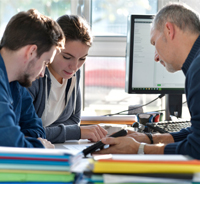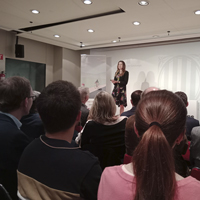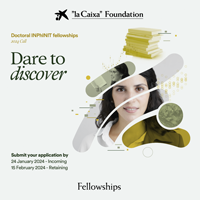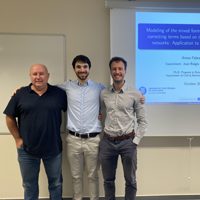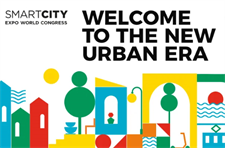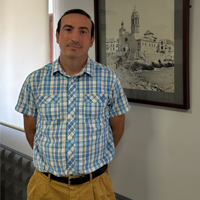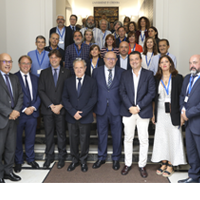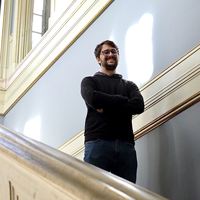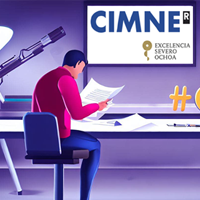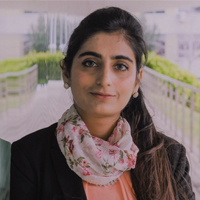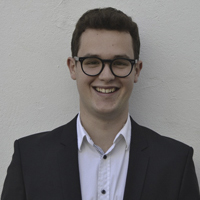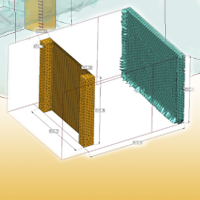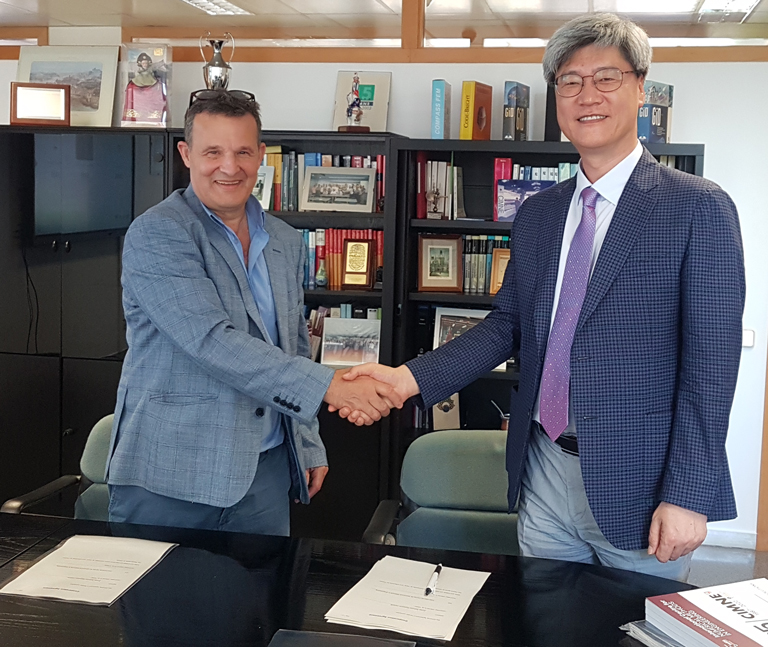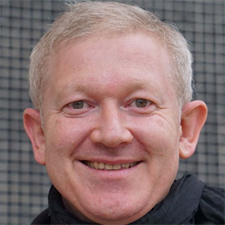news
Success of "Futuros Ingenieros", a Youtube Channel promoted by a CIMNE researcher
Alejandro Cornejo is a postdoctoral researcher at Structural Mechanics group of CIMNE. His research is focused on the improvement of the FEM-DEM methodology for Fluid-Solid Interaction applied to industrial processes. But, in addition to being a researcher, Alejandro is also a scientific disseminator. For a year and a half, he has been the visible face of "Futuros Ingenieros", a YouTube channel which has reached more than 50,000 subscribers. In this interview, he explains how the idea was born and what are the motivations of the channel team.
Where did the idea come from and what were the motivations for opening this channel at the height of the pandemic?
The YouTube channel "Futuros Ingenieros Comunidad" was born to create a community of professionals and students, eminently within the field of engineering. It wants to be a place to find recommendations, information, opinions and, why not, entertainment! We are the three founding members and we are family (first cousins, to be precise). We wanted to find a collaborative project, with a highly creative character and in which we could contribute to its growth together.
In addition, we also looked for a project that would suit us and that would combine our particular knowledge and areas of study. In this sense, we have three very well defined areas, where each one acquires a leadership role: My cousin José is graduated in audiovisual media. He is the main editor, cameraman and sound and lighting technician of the channel. He is in charge of the audiovisual part of the content, as well as supervising the work of third parties that collaborate on the channel. The other member is David, the promoter of the channel. David is in charge of marketing, the content plan, and interaction with the community. He also manages the channel's social networks. Promotion campaigns in networks and advertising are also his responsibility. And I complete the team. I am a Doctor of Civil Engineering, Canals and Ports and associate professor at the university. I am the presenter of the channel. I contribute with my technical knowledge on the subject, as well as my personal and academic experience. I consider that my academic and research background help to give special value to the channel.
Meet the team of "Futuros Ingenieros Comunidad"

From left to right: Alejandro Cornejo, José María Campillo and David Cornejo
- Alejandro Cornejo (29 years old)
Dr. Civil Engineer, Canals and Ports. Associate Professor at the UPC and Postdoctoral Researcher at CIMNE.
Interests: engineering, research, entrepreneurship, YouTube SEO, face-to-face and digital teaching, creator of educational digital content, travel, fantastic novel and philosophical essay - David Cornejo (28 years old)
HNC in commerce and marketing. Administrative in the logistics sector.
Interests: reading, cinema, entrepreneurship, marketing techniques, search engine optimization and SEO, script theory. - José María Campillo (32 years old)
Graduated in audiovisual media. Freelance editor and English teacher.
Interests: literature, languages, video games, cinema, Japanese culture and gastronomy.
The channel has acquired great notoriety in a very short time on the network...
The channel was started from scratch in July 2020, and in this short period of time, we have reached more than 50,000 subscribers on the YouTube platform!
We realized the usefulness of creating platforms aimed at creating a community with a clear common thread: a passion for engineering in any of its aspects. This success and the daily support that our followers offer us help us and push us to continue working, creating more and better content.
We have also strengthened our presence on other satellite platforms such as Instagram (>22,000 followers), WhatsApp (closed group with 100% capacity) and Telegram (>200 engineers).
What subject areas do you cover?
The channel covers various areas, ranging from an approach that is sometimes more academic and in others something more informative, but without neglecting entertainment and fun, as we consider essential on this platform. For example, in one of our videos we define the different branches of engineering by explaining in consist of, in another we simply play alternative video games with a certain relationship to technology or the world of construction. We have also created other content where we tell fascinating stories about the world of architecture or connected to the world of engineering and technology.
What are your production routines?
Our production routine is constantly evolving due to the learning that we are acquiring in view of what has worked for us and what has not on the platform. The production routines also depend on the type of video to be developed: short lessons, explanatory videos or information pills, informative or entertainment.
In the short classes all the recording is done by myself, recording the screen and audio through OBS.
In the video pills, my cousin David and I combine to do the voice-over and my cousin José mixes the audio with stock audiovisual content (free of licenses).
The most time and effort are invested to produce informative videos. The three of us got together in one of our flats and assembled the entire set-up: a decorated wall, a microphone, a camera with a tripod, LEDs to give the shot a sense of depth and spotlights to have good lighting. Once we are getting the proper shot, we started recording, script in hand. David ensures that the tone and mood do not drop throughout the long filming sessions, José is our cameraman and audiovisual expert and I myself record the sound with the highest quality that we can achieve within our possibilities.
Given the success of the channel, where do you see the project evolving?
After a year and a half, we never would have imagined that we would reach more than 50,000 subscribers on YouTube. This excites us a lot and gives us strength and drive to continue creating quality and fresh content for our community. In this sense, what we propose for the coming year is to consolidate ourselves as a channel of reference in terms of dissemination of engineering in Spanish. This challenge is highly ambitious and we have many ideas to achieve it. From the creation of educational videos using highly innovative tools such as Python-based animations and playlists that cover such interesting aspects as the history behind some engineering milestones, engineering wonders, industrial processes, and many more.
At the same time, so that the growth of the project can be sustained and promoted more efficiently, we are actively looking for entities with a clear educational nature, such as Structuralia (an spin-off funded by CIMNE and sold in 2011 to KAPLAN -The Washington Post Group-) in order to collaborate with them and obtain mutual benefit, always oriented towards support people seeking information, advice and support on topics related to science and engineering.



